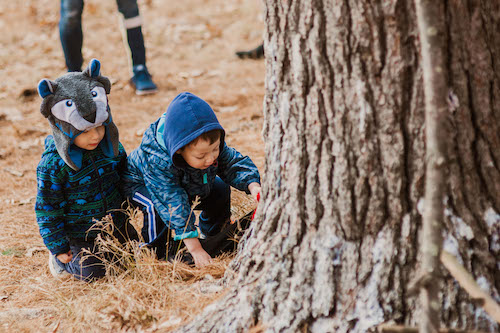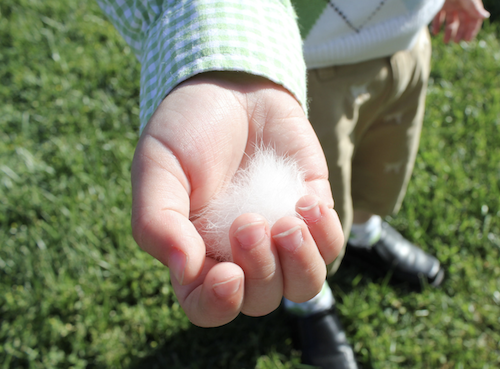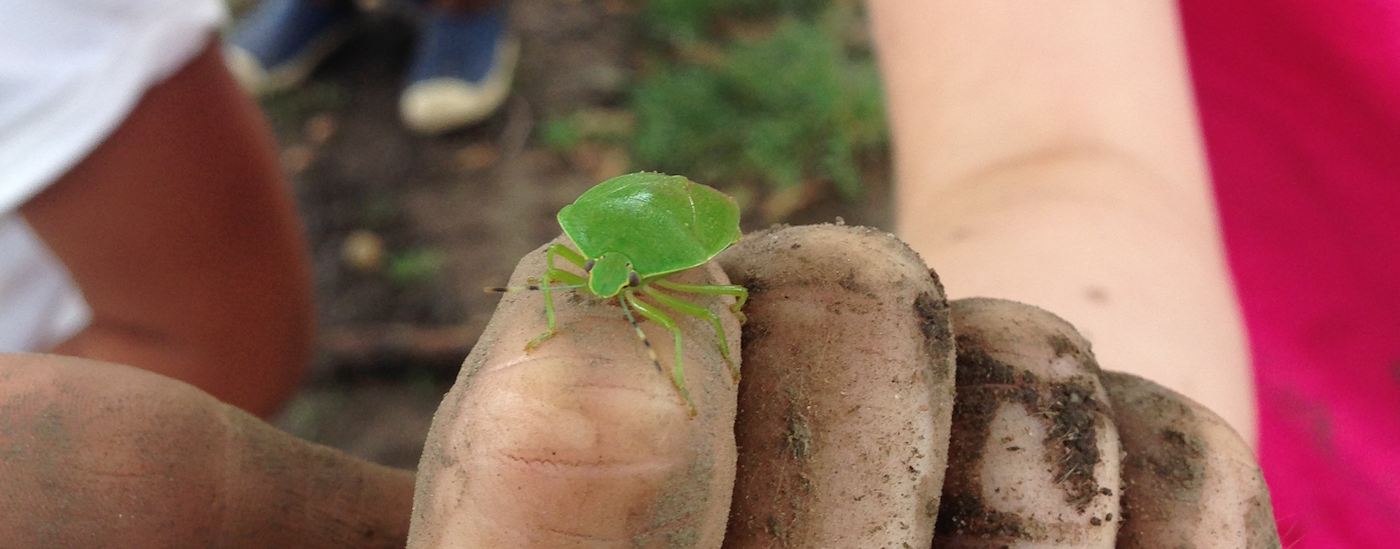Creature Clues
-
Age: 0 to 8+
-
Time: 1 hour+
-
Materials: printable animal track cards
- Skills: Critical Thinking, Curiosity, Problem Solving
This week at Tinkergarten is all about using clues to make connections and generate solutions to problems. The creatures we share our outdoor spaces with are often elusive and hard to spot, yet they leave clues that tell us they were there. Once you know what to look for, you’ll start to see evidence of creature friends everywhere. Search for clues in your outdoor space together, then guess which mystery creatures have been spending time in your area!
The Guide
Step 1: Watch the Mystery Walk video lesson.
Hop into your My Tinkergarten dashboard to watch the Mystery Walk video lesson. Kids can watch how Meghan and other explorers use clues to solve problems, then get inspired to solve their own creature mystery!
Step 2: Head outside to look for clues.
Explore your outdoor space together in search of clues that creatures have left behind. Look up high and down low. Turn over rocks and stumps. Look closely at the ground, leaves, trees, etc. What can you discover about the creatures who live and explore in your outdoor space? Can you use the clues to guess which creatures have been there?
Here are some creature clues to look for:
- Animal tracks—The size, shape and pattern of animal tracks can tell us a lot about the creatures who made them, how they move and where they were going. Print out these Animal Track Cards and compare them to the tracks that you see. How are the tracks you find similar to the ones on the cards? How are they different? Can you find a match? Even if your tracks do not match any of the animals on the cards, kids will gather information about their mystery creatures just by observing and comparing the tracks of different animals.
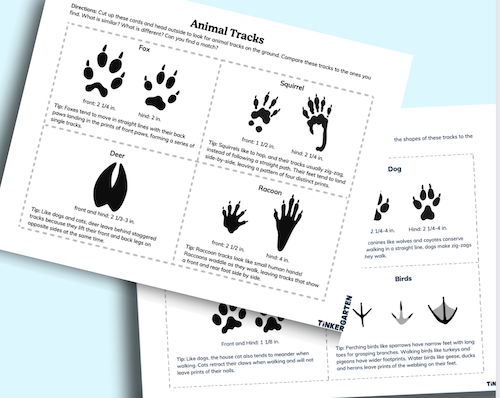
- Hair, feathers and scat—If you look closely enough, you may find bird feathers or even animal hair. When animals rub under low hanging vines and branches, they sometimes leave behind hair in the rough bark. The scat left behind by creatures can give us clues as to who they are and what they like to eat. (And what young child doesn't like to talk about poop!)
- Creature shelters—Look for holes, mounds, nests and other clues that tell you that creatures have found or created homes and shelters in your outdoor space. Animals that don’t make nests, like deer, often bed down in fields and thickets, leaving an oval shaped depression in the vegetation.
- Creature snacks—Animal feeding areas can be berry patches, grassy areas, wooded areas, or almost any other spot that can provide nutrition. Look for holes in leaves, empty nuts or tree fruit shells and other signs that animals have been feasting there.
- Creature sounds—Quiet your body and voice and listen for creature sounds in your outdoor space. Listen for insect sounds. Listen for rustling in trees. Listen for bird songs. You can use an app like SongSleuth or BirdGenie to identify the birds in your area by their sounds.
Step 3: Extend the play.
- Explorer Tracks—Make your own tracks in forest putty or mud with hands or feet. How do your tracks change when you move your body in different ways (e.g. hop, leap, gallop, skip, jump, shuffle, waddle) and at different speeds?
- Nature Treasure Prints—Press nature objects into mud or putty to recreate the shapes of the prints in the Animal Track Cards. Or, make new shapes and designs by pressing nature treasures into forest putty or mud. Turn it into a guessing game by taking turns making a print and then guessing which object made those marks. Read our Nature Fossils DIY for more ideas.
- Mystery Trail Hike—Create your own mystery trail hike by hiding clues along a walking path. Invite kids to guess how the hidden objects are connected and solve the mystery. Read how here.
- Treasure Hunt—Invite kids to create a map of their outdoor space, then hide some nature treasures in one or more places. Mark the spot with an “x”, then grown-ups and kids can enjoy hunting for the hidden treasure. Read our Treasure Hunt DIY for more ideas.
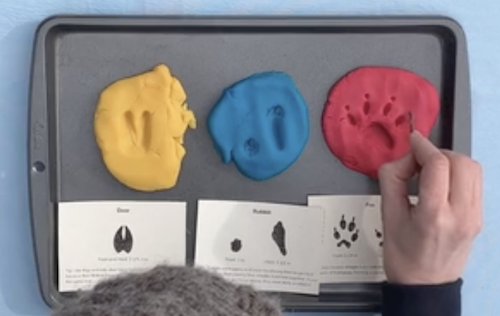
Why is this activity great for kids?
An important part of problem solving is gathering information and then connecting it together to help us solve problems. The invitation to solve a mystery strengthens kids’ curiosity and lends a sense of wonder that inspires imagination. Hunts and pretending are perfect (and fun!) ways to help kids strengthen their focus skills. As kids search for signs of creatures and learn more about them, they also nurture their connection to the natural world and develop empathy for the creatures they share their space with.
